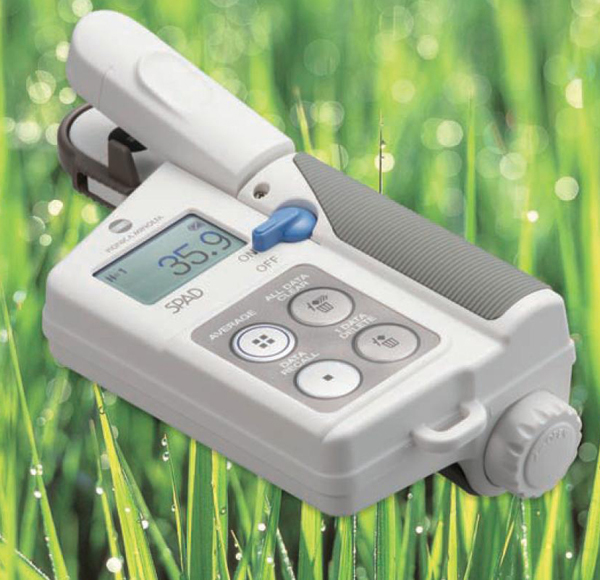Chlorophyll is the most important pigment related to photosynthesis. Its chemical formula is C55H72O5N4Mg. It can be seen that chlorophyll contains elements such as Mg, N, C, H and O. Due to the lack of N elements in the plants, the synthesis of chlorophyll is blocked, resulting in yellowing of the leaves, and the photosynthesis is weakened or even stopped. Therefore, the chlorophyll content meter can not only detect the chlorophyll content in the leaves of plants, but also determine whether the fertilization work is done adequately and whether the plants have nitrogen deficiency. In agricultural production, the chlorophyll content meter is also an effective way to diagnose nitrogen in plants.

Cotton is a very common economic crop, and the harvested cotton can be used to process quilts, cotton and other products. Therefore, the economic benefits of cotton cultivation are very substantial, but the long-term cotton yield and total output are not practical. The main problems faced in the work, because with the development of science and technology, in order to carry out high-yield and high-quality cotton cultivation, scientific instruments such as chlorophyll content meters have been applied to cotton production in succession, not only helping to adjust and improve the production process, but also to further improve Cotton production and quality.
Chlorophyll content meter is a professional instrument used to determine the chlorophyll content in the leaves of plants. The instrument is compact and can be taken directly on the hand and taken to the field. When the cotton leaf is measured, it is not necessary to remove the leaf. The leaf is directly clamped in the middle of the instrument and the sensor can be pressed.
The application of chlorophyll content meter in cotton cultivation can tell us whether the cotton fertilization is done correctly and whether the amount of fertilization is appropriate. Especially in the application of nitrogen fertilizer, using a good chlorophyll content meter can not only control the amount of nitrogen fertilizer application, but also It can significantly increase the nitrogen utilization rate and reduce the environmental pollution caused by too much nitrogen fertilizer. Compared with traditional fertilization, it can effectively save fertilizer resources, reduce production costs, and improve the ecological environment of agriculture. While cotton grows under such environmental conditions, its growth and production potential have also been further excavated.
The final product will be 40%-45% tire oil (fuel oil), carbon black and 35% carbon black, 10% steel and another 5-10% recycled gas (CH4-C4H10).
The main process is to pyrolyze the tire into oil and gas by directly heating the reactor;
The condenser or cooling tube will cool the gas to a liquid oil with the aid of circulating water;
Then, the remaining gas that cannot be cooled into liquid oil is recycled to the reactor heating system; after the oil and gas is completely discharged, the reactor is stopped to be cooled, and the reactor below 70 degrees is cooled; then the door can be automatically opened and the carbon black can be discharged. .
The capacity of each batch of products ranges from 5 tons to 20 tons.
LN-2200-6000 capacity 5-6 tons
LN-2200-6600 has a capacity of 7-8 tons
LN-2200-8000 has a capacity of 9-10ton
LN-2600-6600 has a capacity of 10-12ton
LN-2600-8000 has a capacity of 12-14ton
LN-2800-6000 capacity is 10-12ton
LN-2800-6600 has a capacity of 12-14 tons
LN-2800-8000 capacity is 15-20ton
If cut into small pieces, it can handle more.
Lanning Waste Tyres Recycling,Tyres Recycling to Oil Plant,Waste Recycling to Fuel Oil,Waste Tyre Recycling to Fuel Plants
Henan Lanning Technology Co., Ltd , https://www.lanningrecycling.com
